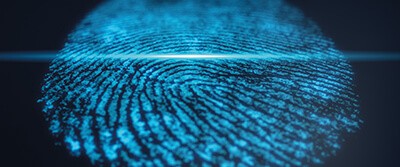Forensics in Another Light

By Chris Bily, West Virginia University
I was hired by West Virginia University as a Forensic Science Instructional Coordinator to lead the Next Generation Forensic Science Initiative, a K-12 outreach program. The immediate challenge was to create an interactive forensic science exhibit for the 2013 National Scout Jamboree held at the Bechtel Reserve in southern West Virginia. At the conclusion of the Jamboree, my responsibilities shifted to the development and delivery of forensic science outreach programs for the youth and educators of West Virginia.
Our programs were initially directed toward offering classes in a variety of forensic science disciplines to middle and high school students, and parents would regularly request to attend these classes. I have taught forensic science to youth for many years and without exception I have always had parents who expressed an interest in learning the material being taught to their children. I decided it was time to offer a series of classes for parents and children together.
Developing the Curriculum
Regardless of the age of the audience, there is one universal truth that I always try to follow: Participants would much rather learn how to do something rather than learn how something is done. All activities were chosen to maximize the hands-on experience of the attendees. Three forensic disciplines were chosen: footwear impression evidence, firearm identification, and bloodstain pattern analysis. In the footwear impression evidence class, participants learned how to recover evidence through stone casting and how to compare and identify crime scene impressions to examples of a suspect’s shoes. In the firearm identification class, they learned how to measure and evaluate class characteristics of fired bullets and how to compare bullets from crime scenes to test bullets fired from a suspect’s gun. In the bloodstain pattern analysis class, participants created bloodstain patterns employing a variety of different mechanisms.
Program Success
At the conclusion of the first set of classes, I held an informal discussion and distributed an anonymous written survey to assess the effectiveness of the classes. The data gathered from these assessments was powerful and compelling. The consensus was that participants thoroughly enjoyed the content of the classes, as well as the way in which the classes were delivered. Participants said they would join in another set of classes if given the opportunity.
Numerous benefits can be seen or assumed through the inclusion of parents into the learning process.
- Parent/Child Relationships — Parents and children were able to build and strengthen relationships through mutual interest in scientific inquiry. Not only did the participants get to learn exciting and interesting science, they forged memories together that will last for many years to come.
- Vested Interest — Having parents intimately involved in their children’s education is an ideal situation. Parents rarely get to go to school and learn the same material with their children. The class gave parents a sense of ownership in their child’s education and it also gave them confidence in the nature and quality of instruction that their children were receiving.
- Maintaining Focus — The majority of our child participants were in middle school, an age group that can be difficult to keep on task. This was not the case when their parents were present and actively engaged in the same environment, instruction and materials.
- Public Relations — It’s impossible to overemphasize the positive impact that these classes have on the community at large. Parents came from all walks of life. They are valuable assets in growing and developing a program. As individuals of influence in the community, parents will be an excellent source of advertising. It’s important to remember that you are doing much more than teaching a class — you are building relationships.
- Science Isn’t Easy — When presented fundamental topics in a serious and structured academic environment, the participants quickly realized that being a forensic scientist is a difficult job that requires a great deal of education in math and science.
- A Dose of Reality — This was a golden opportunity to provide youth with genuine experiences that allow them to make decisions about whether or not they are really interested in forensic science. Watching something done on television and presented in a glamourous environment surrounded by compelling graphics and images is one thing. Rolling up your sleeves, sitting at a lab bench and doing the work is another thing altogether.
Lessons Learned
The first lesson I learned was the importance of having staff that is properly trained and that enjoys working with parents and children. One of the reasons for the success was because of the student workers and their ability to engage and interact with the participants.
The second lesson I want to emphasize is preparation. Good preparation and knowing your audience yields positive experiences.
The third lesson I learned was not to underestimate the importance of take-away items produced during the course of the classes. Several parents and children commented that they really enjoyed being able to take home the exhibits that they made in class. I suspect that these tangible items provided a physical reminder of an enjoyable and stimulating shared learning experience between parent and child.
The value of the Parent/Child Forensic Science Classes were personally and professionally rewarding and a great deal of fun. Their scientific value is substantial and multidimensional. The short- and long-term benefits of holding these classes should not be underestimated. Future social bonding between parent and child is an unanticipated outcome. I hope that you consider offering similar classes yourself.